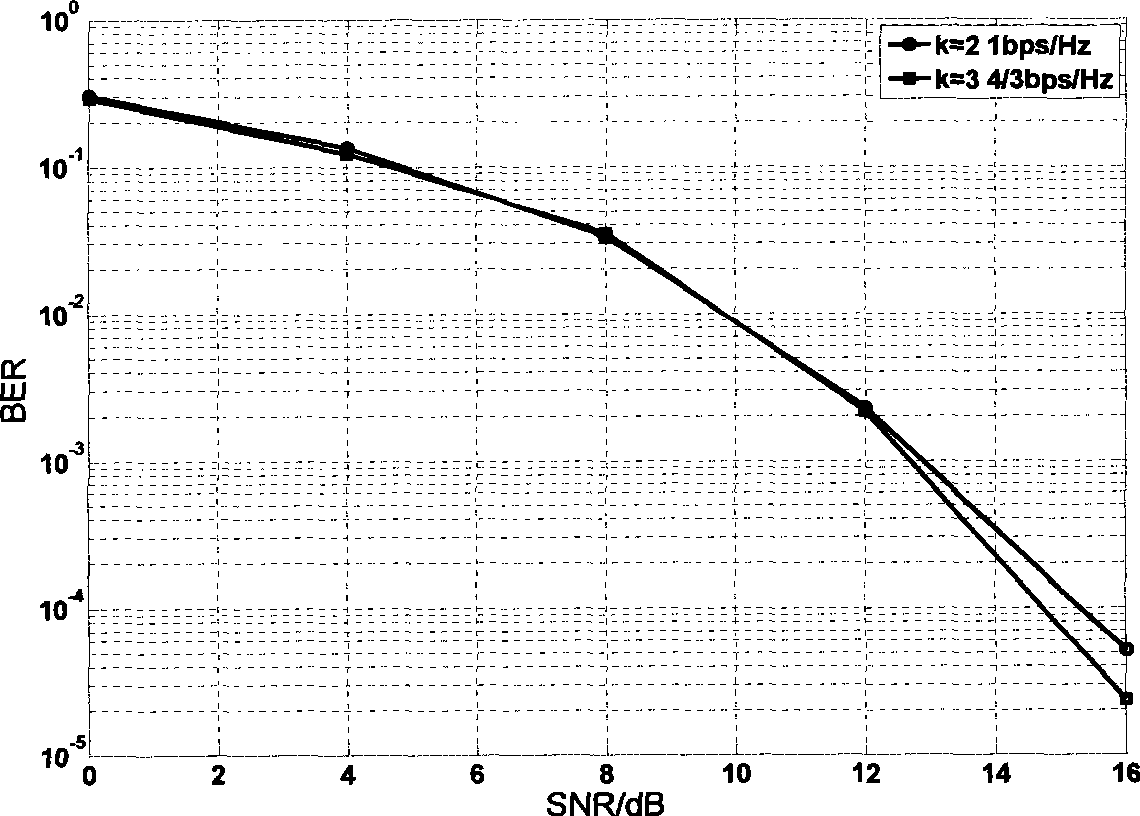Unitary space time coding scheme based on Gram-Schmidt orthogonalization procedure
A coding scheme, unitary space-time technique, applied in the direction of error prevention/detection through diversity reception, etc.
- Summary
- Abstract
- Description
- Claims
- Application Information
AI Technical Summary
Problems solved by technology
Method used
Image
Examples
Embodiment Construction
[0069] The technical scheme of the present invention is described in detail below in conjunction with accompanying drawing:
[0070] (1) Build a system model: build a MIMO system model with 4 launch days according to the first subsection of the technical solution of the present invention, such as figure 1 shown. The input data is first space-time encoded to generate M outputs. The M symbols are modulated into parallel radio frequency band-pass signals, which are sent through M antennas. The transmitted signal passes through the wireless channel, undergoes fading, and reaches the receiving antenna. The signal plus noise is received by N antennas, matched filtered, sampled, and N outputs are generated, followed by space-time decoding to restore the original data. (2) Determine system parameters: the number of transmitting antennas is four, and the number of receiving antennas is one or more. For the symbols in (9), the QPSK rotation constellation is used, that is, the symbol...
PUM
 Login to View More
Login to View More Abstract
Description
Claims
Application Information
 Login to View More
Login to View More - R&D
- Intellectual Property
- Life Sciences
- Materials
- Tech Scout
- Unparalleled Data Quality
- Higher Quality Content
- 60% Fewer Hallucinations
Browse by: Latest US Patents, China's latest patents, Technical Efficacy Thesaurus, Application Domain, Technology Topic, Popular Technical Reports.
© 2025 PatSnap. All rights reserved.Legal|Privacy policy|Modern Slavery Act Transparency Statement|Sitemap|About US| Contact US: help@patsnap.com



